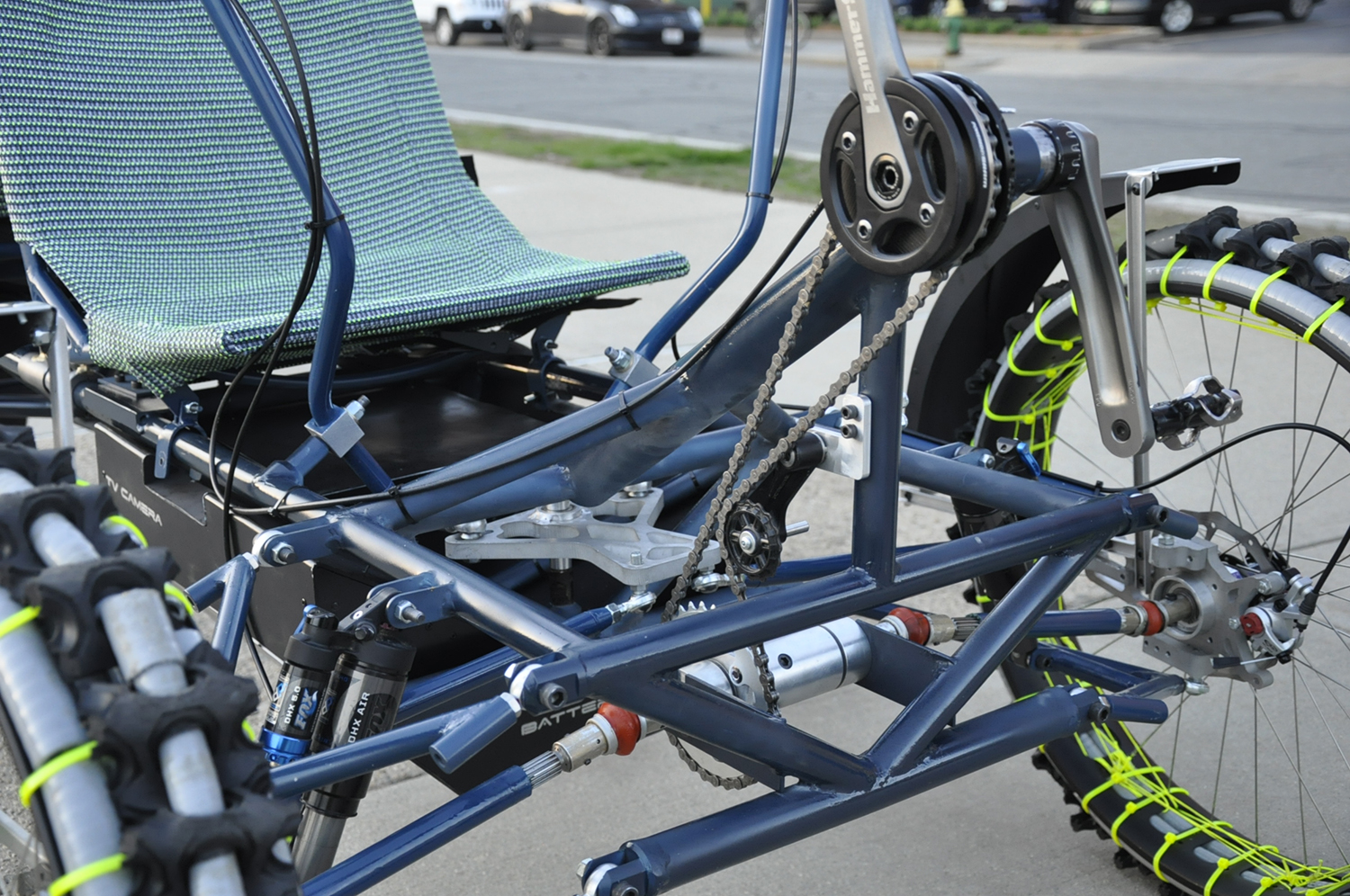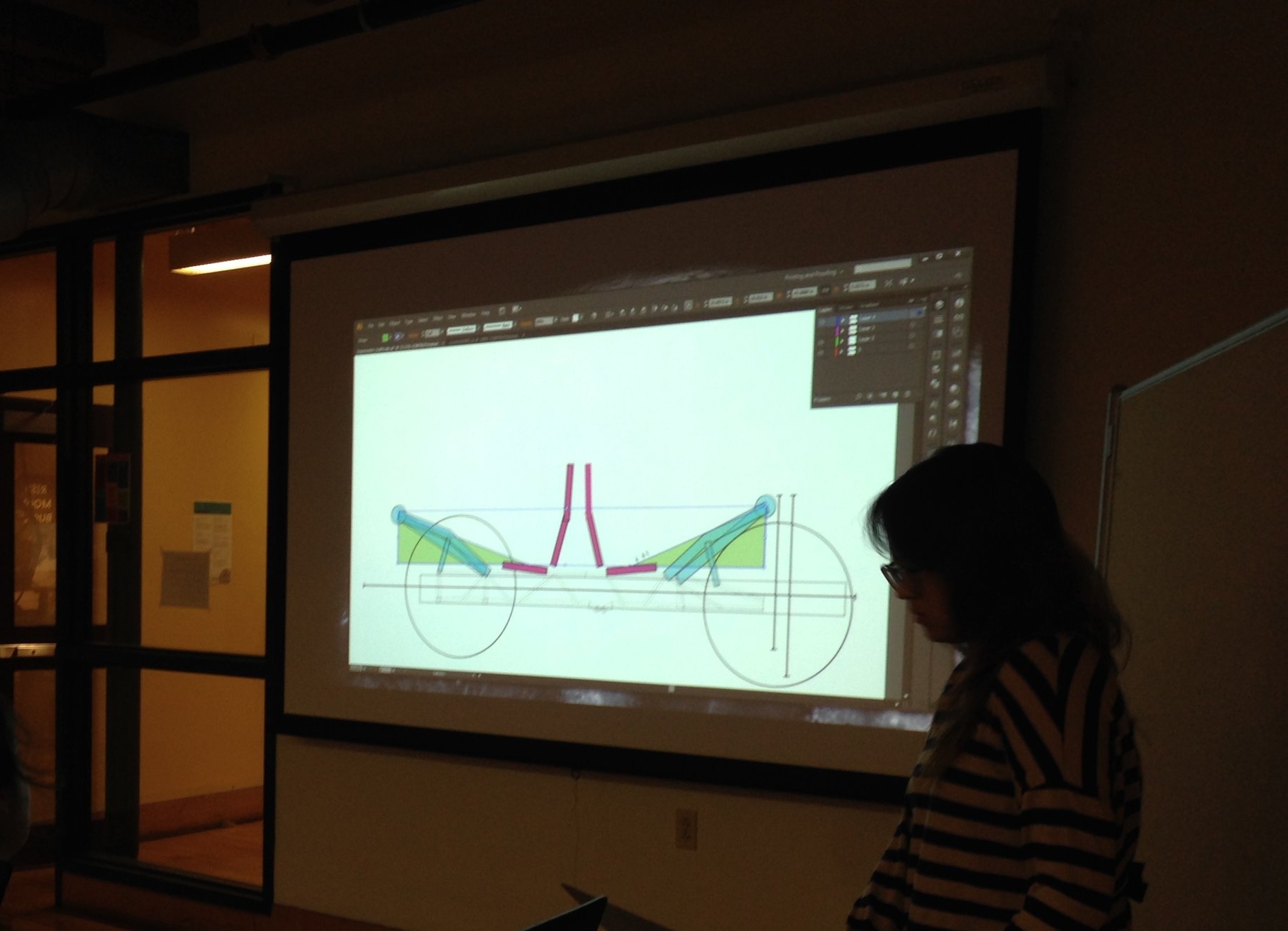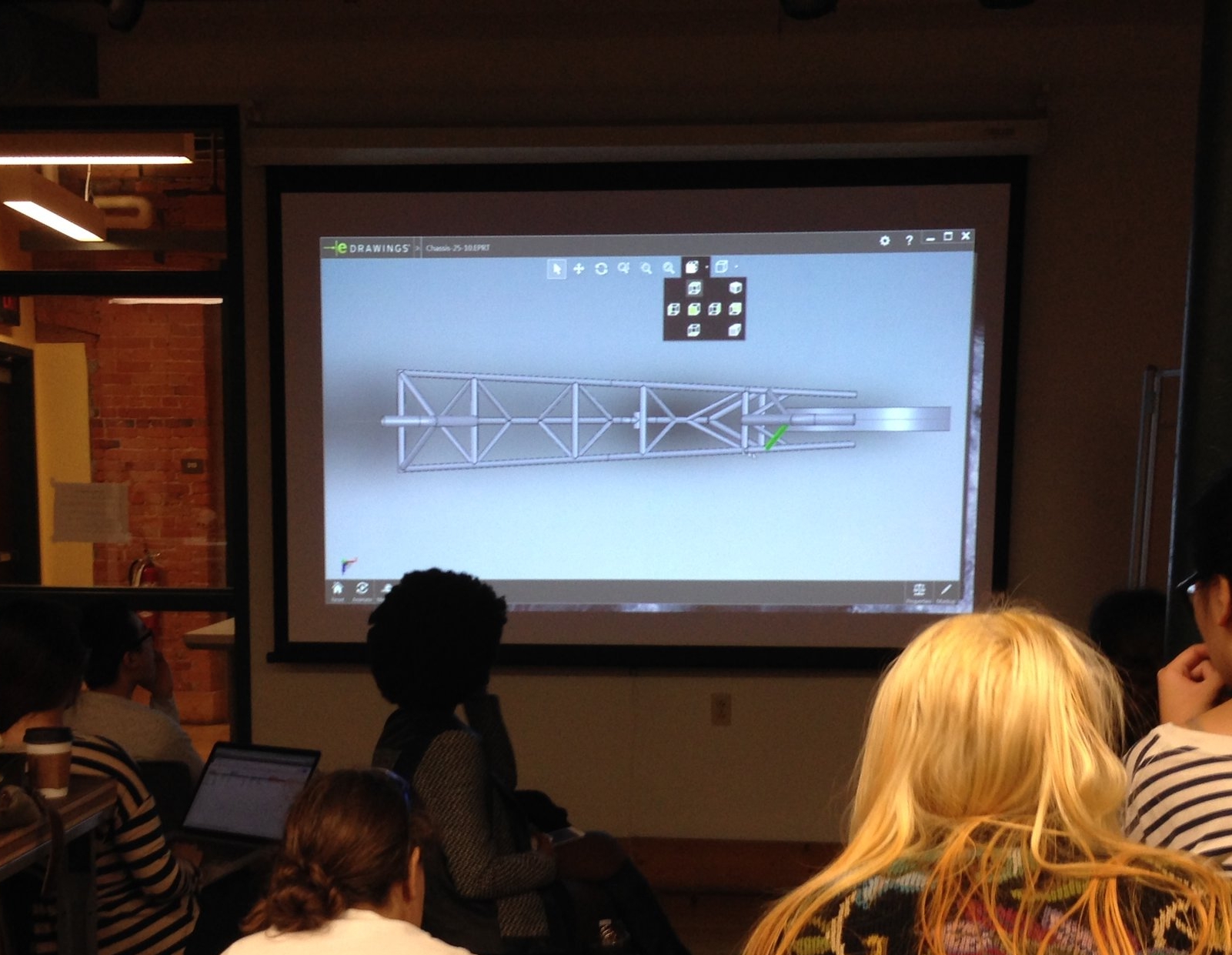The NASA Rover Challenge is an annual human-powered vehicle contest based off the design constraints of the Lunar Rover of Apollo 15-17.
THE RULES
Must be human powered by one male and one female.
Must collapse to fit in the volume of a 5 ft. cube.
Must be propelled by non-pneuamtic (airless) wheels.
Must be carried by two people over a distance of 20 ft.
I co-captained RISD's 2015 Rover team, a unique entry as the only industrial design team participating in an engineering competition. We won the Technology Challenge Award for the non-pneumatic tyre design.
CHASSIS DESIGN AND BUILD
The vehicle chassis and seating configuration was designed by building low-fidelity, full-scale mockups with PVC pipe and plywood. I was responsible for creating the final CAD dataset incorporating the team's design decisions, and creating part documentation for the CNC tube vendor. The chassis was constructed by brazing thin-walled chromoly steel tube.
DIFFERENTIAL
I was also responsible for designing and fabricating the differential driving the rover's front two wheels. The final star ratchet design was significantly lighter and more compact than the previous years' iterations. Excluding the chainring, the final volume of the system was a 2" diameter x 6" long cylinder.
DESIGN PROCESS
The differential had to be made as lightweight and compact as possible, and assembled using only mechanical fasteners. Traditional bicycle freewheels tend to be extremely heavy, and are easily damaged if directly welded on to a drive shaft. We decided to adapt the freewheel system in the DT Swiss Star Ratchet bike hub for our desired application.
#MarsOrBust
































